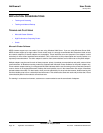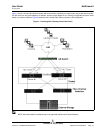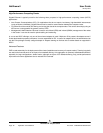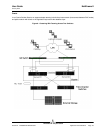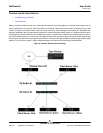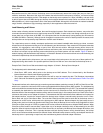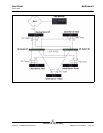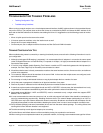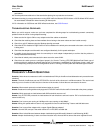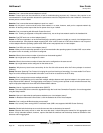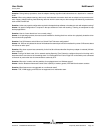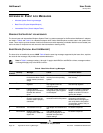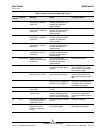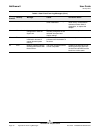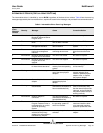
NetXtreme II User Guide
January 2010
Broadcom Corporation
Page 54 Troubleshooting Teaming Problems Document ENGSRVT52-CDUM100-R
TROUBLESHOOTING TEAMING PROBLEMS
• Teaming Configuration Tips
• Troubleshooting Guidelines
When running a protocol analyzer over a virtual adapter teamed interface, the MAC address shown in the transmitted frames
may not be correct. The analyzer does not show the frames as constructed by BASP and shows the MAC address of the
team and not the MAC address of the interface transmitting the frame. It is suggested to use the following process to monitor
a team:
• Mirror all uplink ports from the team at the switch.
• If the team spans two switches, mirror the interlink trunk as well.
• Sample all mirror ports independently.
• On the analyzer, use an adapter and driver that does not filter QoS and VLAN information.
TEAMING CONFIGURATION TIPS
When troubleshooting network connectivity or teaming functionality issues, ensure that the following information is true for
your configuration.
1. Although mixed-speed SLB teaming is supported, it is recommended that all adapters in a team be the same speed
(either all Gigabit Ethernet or all Fast Ethernet). For speeds of 10 Gbps, it is highly recommended that all adapters in a
team be the same speed.
2. If LiveLink is not enabled, disable Spanning Tree Protocol or enable an STP mode that bypasses the initial phases (for
example, Port Fast, Edge Port) for the switch ports connected to a team.
3. All switches that the team is directly connected to must have the same hardware revision, firmware revision, and software
revision to be supported.
4. To be teamed, adapters should be members of the same VLAN. In the event that multiple teams are configured, each
team should be on a separate network.
5. Do not assign a Locally Administered Address on any physical adapter that is a member of a team.
6. Verify that power management is disabled on all physical members of any team.
7. Remove any static IP address from the individual physical team members before the team is built.
8. A team that requires maximum throughput should use LACP or GEC\FEC. In these cases, the intermediate driver is only
responsible for the outbound load balancing while the switch performs the inbound load balancing.
9. Aggregated teams (802.3ad \ LACP and GEC\FEC) must be connected to only a single switch that supports IEEE
802.3a, LACP or GEC/FEC.
10. It is not recommended to connect any team to a hub, as a hub only support half duplex. Hubs should be connected to a
team for troubleshooting purposes only. Disabling the device driver of a network adapter participating in an LACP or
GEC/FEC team may have adverse affects with network connectivity. Broadcom recommends that the adapter first be
physically disconnected from the switch before disabling the device driver in order to avoid a network connection loss.
11. Verify the base (Miniport) and team (intermediate) drivers are from the same release package. The mixing of base and
teaming drivers from different releases is not supported.
12. Test the connectivity to each physical adapter prior to teaming.
13. Test the failover and fallback behavior of the team before placing into a production environment.
14. When moving from a nonproduction network to a production network, it is strongly recommended to test again for failover



